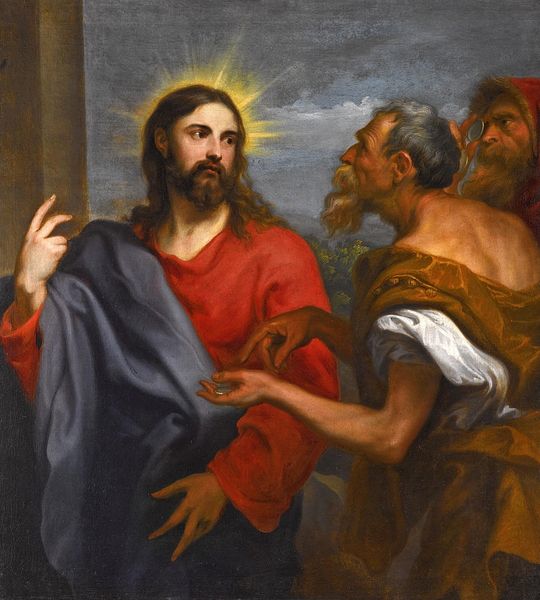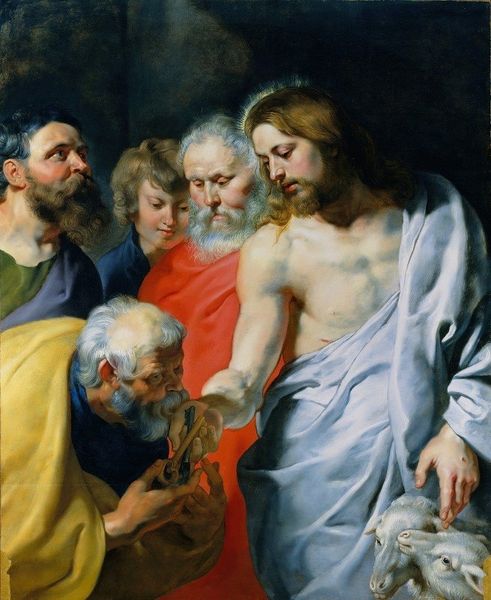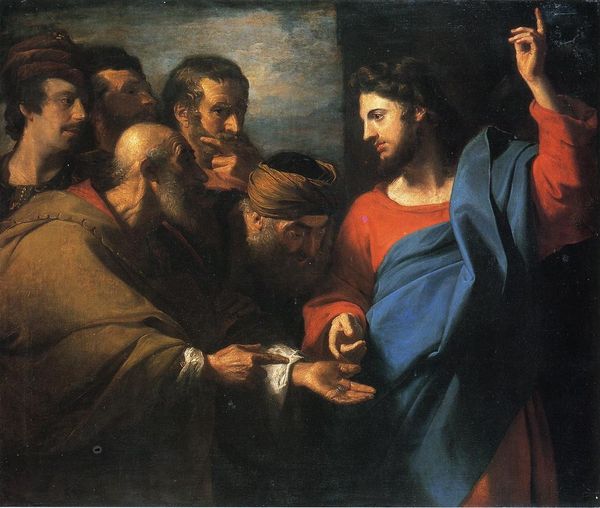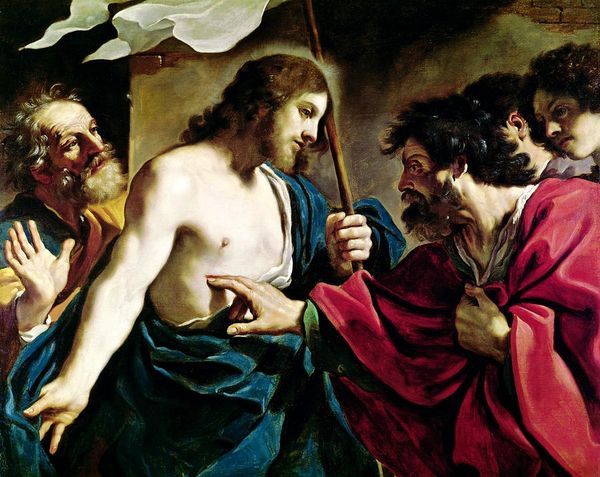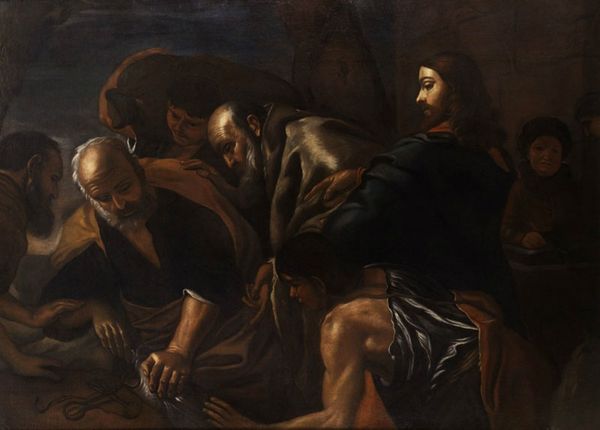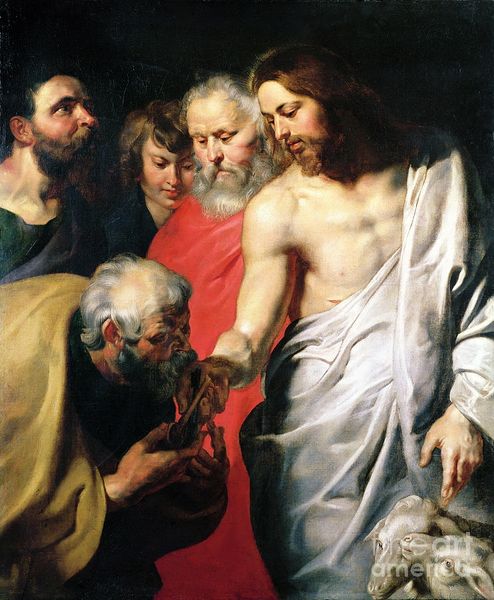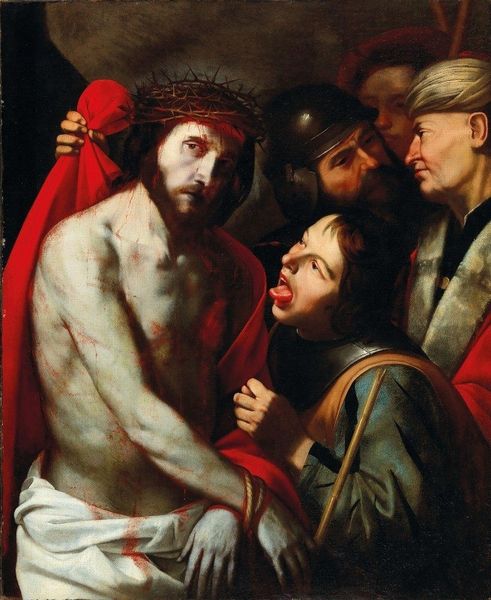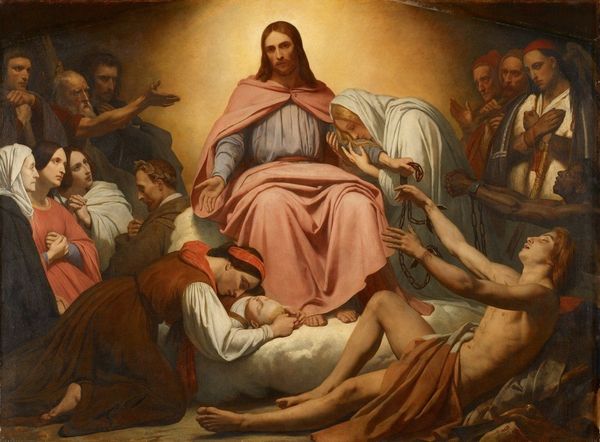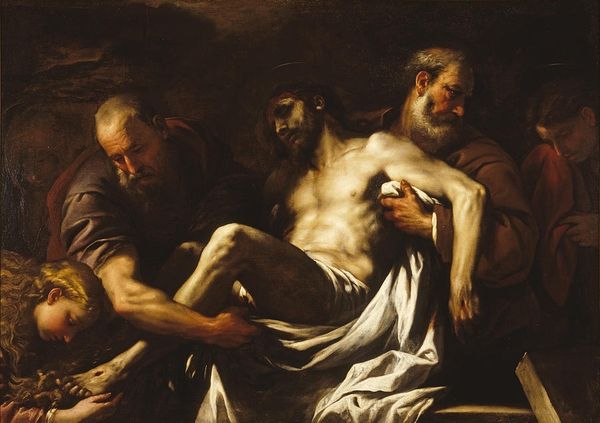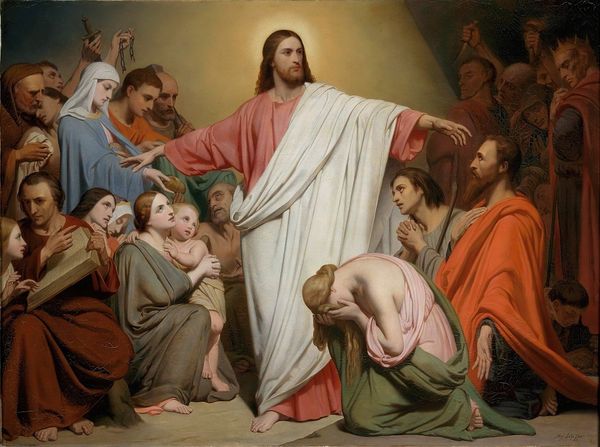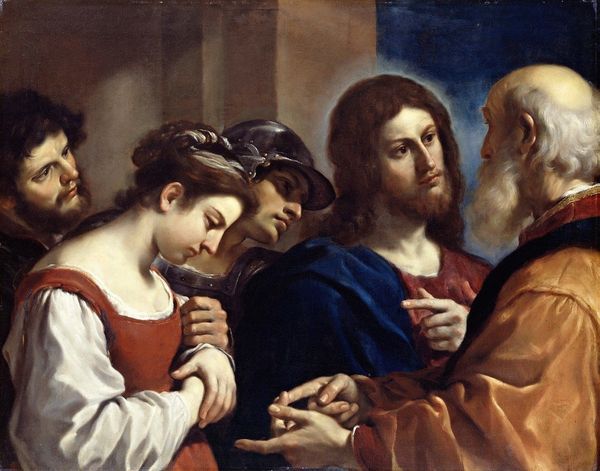
painting, oil-paint
#
portrait
#
baroque
#
painting
#
oil-paint
#
figuration
#
history-painting
Copyright: Public Domain: Artvee
Curator: This is Anthony van Dyck’s, Christ of the Coin, an oil painting created around 1625. Editor: My first impression is one of stark contrasts. The serene, almost otherworldly light on Christ's face set against the harsh, almost grotesque features of the figures confronting him—it's quite a striking dichotomy. Curator: The work depicts a scene from the Gospel of Matthew, where the Pharisees attempt to trap Jesus by asking if it is lawful to pay taxes to Caesar. His response, "Render unto Caesar the things that are Caesar's, and unto God the things that are God's," highlights the separation of secular and divine authority. Editor: Absolutely, and it seems Van Dyck is using the composition to underscore this tension. The intense gazes of the men, so earthy and driven by what feels like suspicion or greed, pushing in towards Jesus. There’s an almost aggressive energy emanating from them. How does this reflect Van Dyck's socio-political milieu? Curator: Van Dyck painted this during a period of significant religious and political upheaval. As a court painter, first for the Habsburgs and later for Charles I, his work frequently navigated the complex relationship between religious conviction, royal authority, and social order. "Christ of the Coin," speaks to that precarious balance, reflecting on the moral implications of political power, which makes this piece such an important reflection of the baroque period. Editor: Yes, and placing the artwork within the context of economic systems as a driving, corrupting force in our social and political relationships resonates today, perhaps even more intensely, than it might have in Van Dyck’s time. Curator: I agree, examining such a moment from the Gospels underscores a recurrent human struggle that transcends time. It shows that we continue to contend with this very same challenge: finding a fair place for differing factions, without falling into blind piety or moral compromise. Editor: It’s a potent reminder, really. I appreciate how Van Dyck uses this biblical narrative to raise questions about power, authority, and morality that remain remarkably relevant. Curator: Indeed. By understanding both the painting’s historical context and contemporary implications, we might view it with new eyes. Editor: A very helpful perspective. Thank you!
Comments
No comments
Be the first to comment and join the conversation on the ultimate creative platform.
